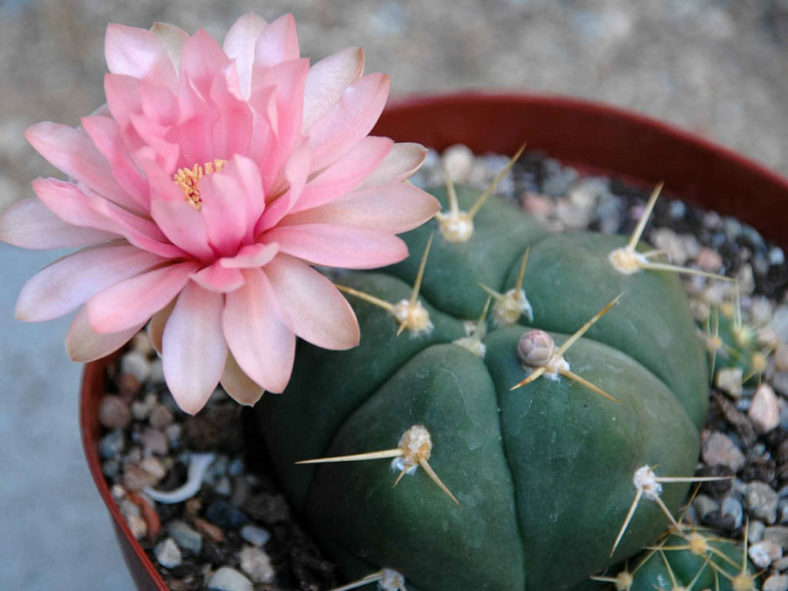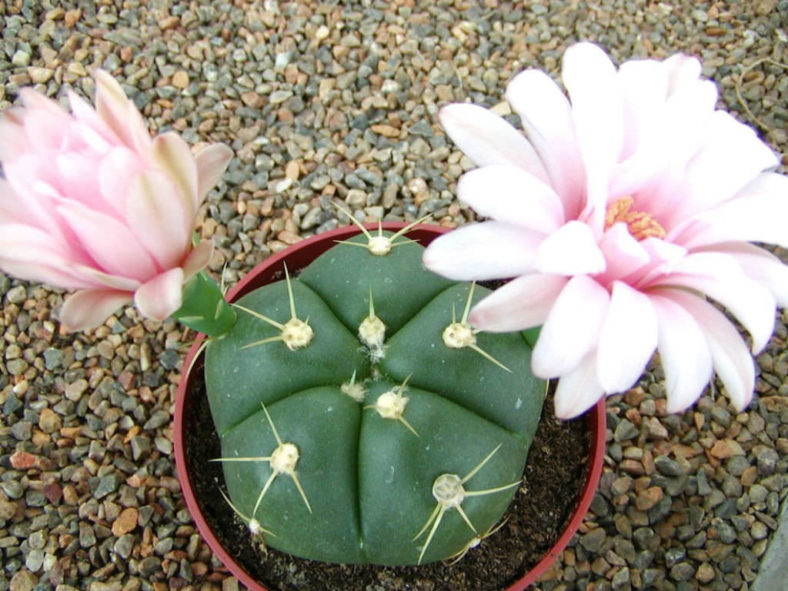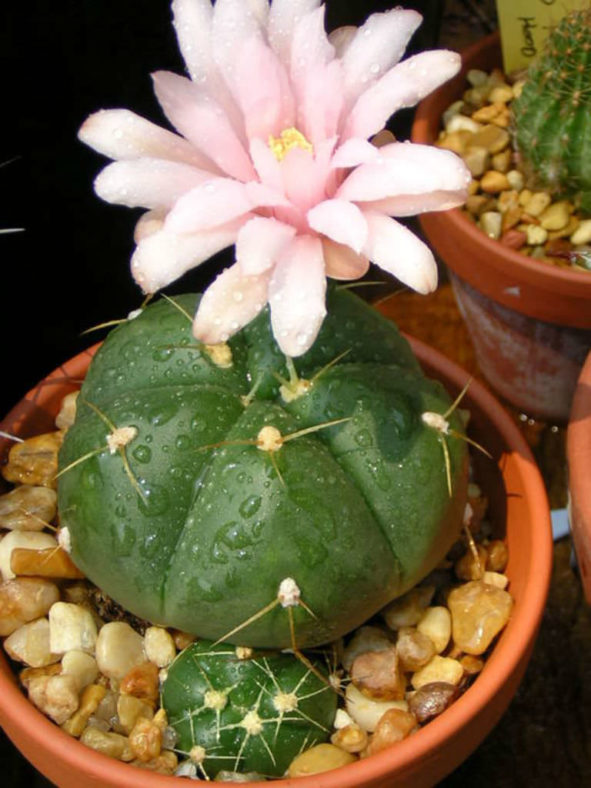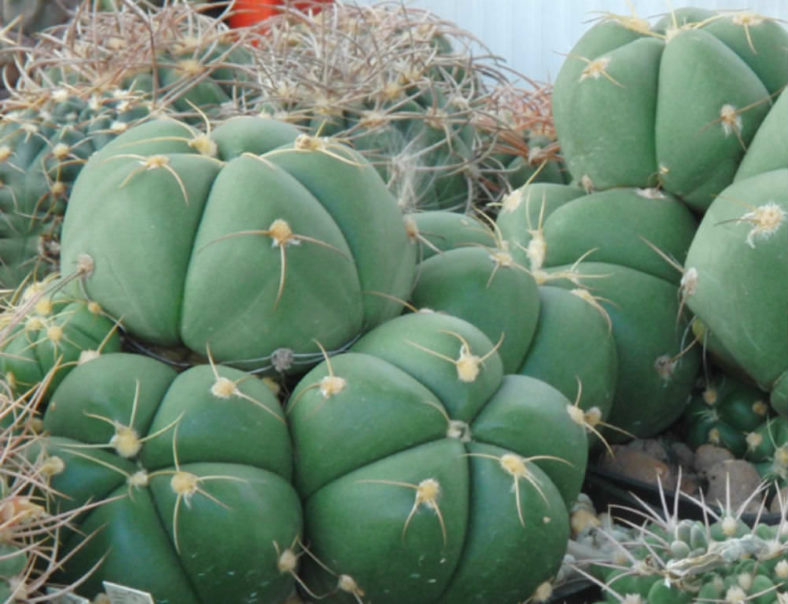Scientific Name
Gymnocalycium horstii Buining
Common Name(s)
Spider Cactus
Synonym(s)
Gymnocalycium horstii subsp. horstii
Scientific Classification
Family: Cactaceae
Subfamily: Cactoideae
Tribe: Trichocereeae
Genus: Gymnocalycium
Etymology
The specific epithet "horstii" (pronounced "HORST-ee-eye") honors Leopoldo Horst (1918-1987), a German-born Brazilian cactus collector and exporter in Rio Grande do Sul.
Origin
The native range of Gymnocalycium horstii extends from southern Brazil, eastern Paraguay, and northeastern Argentina to Uruguay. It grows on rocky outcrops at elevations up to 980 feet (300 m).
Description
Gymnocalycium horstii is a cactus with green, depressed globose stems that have 5 to 6 ribs, each with 3 to 5 woolly areoles, out of which grow spines curved back towards the body. The stems can grow up to 10 inches (25 cm) in diameter and typically produce offsets, forming a clump over time. Each areole usually bears 5, rarely 6, yellowish-white to pale yellow spines measuring up to 1.2 inches (3 cm) in length.
The flowers vary in color from white to pale pink. They are funnel-shaped and appear in spring, reaching a length of 4 inches (10 cm) and nearly equal diameter. The fruits are ovoid, bluish-green when ripe, and can grow up to 2.4 inches (6 cm) long.

Hardiness
USDA hardiness zones 10a to 11b: from 30°F (-1.1°C) to 50°F (10°C).
How to Grow and Care
Some Gymnocalyciums are shade-seeking in the wild, growing among shrubs or grasses, while others thrive in full sun. Therefore, some plants will need light shading from the sun in the hottest months, but overdoing this will result in the loss of flowers.
The potting medium's balance should be sufficient to allow good drainage so that the plants do not sit in soggy soil for more than a day or two after watering.
Watering in the summer months, while the plants are growing well, can be frequent (weekly for small plants in small pots), but always allow the compost to dry out before rewatering. Watering in the winter months is unwise and unnecessary. The difficult times are spring and autumn.
Species that produce offsets can be readily propagated by cuttings. Gymnocalycium seeds germinate well when fresh and can be stored for a few years in cold conditions.
See more at How to Grow and Care for Gymnocalycium.
Links
- Back to genus Gymnocalycium
- Succupedia: Browse succulents by Scientific Name, Common Name, Genus, Family, USDA Hardiness Zone, Origin, or cacti by Genus
Photo Gallery
Click on a photo to see a larger version.


